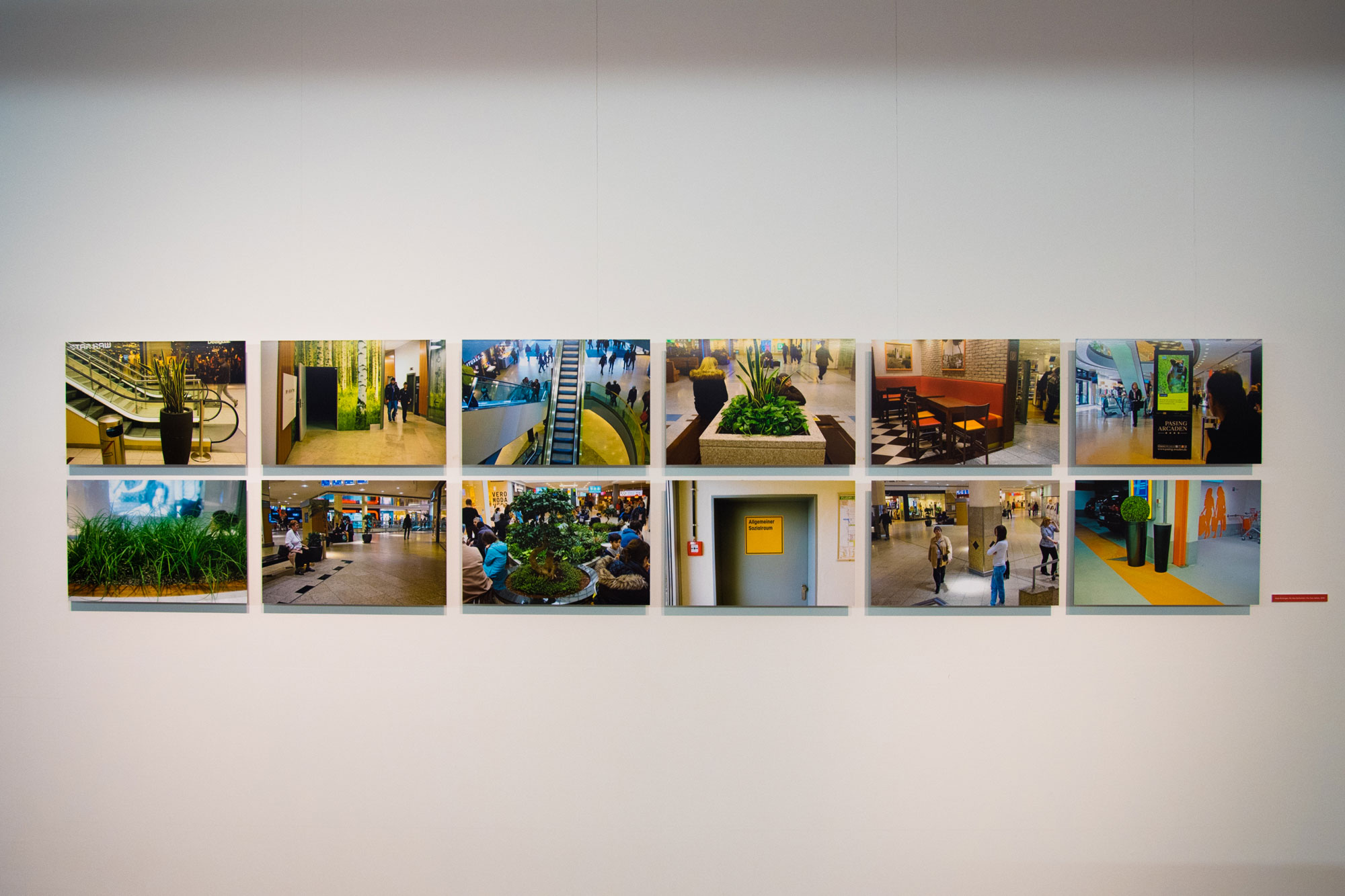
The Suburbanization of the Soul
Shopping, alongside soccer, traffic jams, and anxiety in the face of the looming socioeconomic apocalypse, is the last folkloristic ritual of modern society. In our increasingly fragmented culture, shopping – i.e. the act of strolling through zones of consumption, punctuated by occasional purchases – is one of the last conventions we experience as a community.
The designated space for this ritual is the mall. Not even the Internet and its purchasing opportunities can compete with these zones of consumption. This is because consumption is not the actual purpose of shopping as much as it is the justification for spending time in such an environment.
Each new mall that opens – take for example the Arkaden in Pasing, a suburb of Munich, inaugurated in 2011 – attests to our need for social proximity and shelter from the unpredictability of life.
The shopping mall is the church of the suburb. A sedate place where we can feel secure, where extreme emotions are left to the people appearing on advertising posters. Here, nothing is hectic or rushed; the escalators set the pace. There are no noisy neighbors, no alarming news reports. Before we step across the entrance threshold, every form of excitement, all the world’s problems, are eliminated along with the cigarettes that are crushed into the sand-filled ashtrays set alongside plastic trees.
The shopping mall facilitates social proximity without confrontation. Eye contact between visitors is avoided, our gazes are guided by window displays. Here, the order of things is determined by consumption, and everyone complies. Not even children disrupt the soothing white noise of the escalators, since good behavior is rewarded with an ice cream cone.
The eating of ice cream, the sweet yet short-lived pleasure of letting what was once solid melt into air, is as much a part of the shopping mall experience as the »holy trinity« of escalator, trash bins, and flowerpots, and remains a symbol of holiday times and carefree living. For one sweet moment it suspends us in what J.G. Ballard refers to in his final novel, Kingdom Come, as the »eternal retail present.
The shopping mall allows visitors to lose themselves. In the labyrinth of corridors and escalators, one can easily get lost, just as one did formerly in the mazes of stately homes. We are reminded of Herman Broch’s The Sleepwalkers, where we read of a horseback ride: »I yearn to sink into your foreignness, I yearn for you to be final, the predestined one for me.«
Consumption, then, goes hand-in-hand with the spirit of Romanticism. It’s about the flight from reality into different worlds. Consumption is therefore anything but materialistic. The idea that people consume in order to possess is a misunderstanding. We consume because we yearn to experience in reality through some »new« product, those dramas of desire which – stimulated by advertising or culture – we have already lived through in the realm of fantasy reality. Since reality can never match up to our fantasies, we continue to engage in consumption. Lacan’s »I desire, therefore I am« now becomes »I shop therefore I am.«
The shopping mall accommodates the human need for forgetting oneself. We can surrender ourselves to the safe arms of whichever forms of covetousness and desire are proffered. We may forget our identities, for a new one awaits us in the next shop.
Even in tradition-bound Munich there are no echoes of Bavarian custom inside the malls. Both the Olympiazentrum and the Pasing Arcaden are Bavaria-free zones. No dirndls, no lederhosen, no blue and white diamonds of the Bavarian flag. Preferred instead are Asian and Italian fast food restaurants in particular. Once again, the suggestion of holiday, the illusion of vastness within an enclosed space.
Simulacra of nature, too, belong to the standard equipment of every mall. Already in the parking garage of the Pasing Arcaden, visitors are greeted with recordings of birdsong. On the way to the restrooms, the birch forest wallpaper suggests fresh air, and a photograph of blue skies distracts from the neon lighting. And sitting next to every escalator, every bench, is a palm tree or an Orwellian aspidistra, not just as a signifier of nature, but also of vacation times, exoticism, and affluence. Among plants, only the Christmas tree is more laden with symbolic meaning than the potted plants of the shopping mall.
Projected on television screens are continually new photographs of predatory beasts living in the wild. While mall visitors graze contently in long corridors, licking their ice cream cones in the profound tranquility of consumption, they are presented with images of tamed wildness. In the shopping mall, ungovernable forces are trimmed like suburban hedges and incorporated into the consumerist order. Enacted here is the suburbanization of the soul.
People in shopping malls appear contented. They seem quite comfortable in this air-conditioned, semi-public space, which guarantees security and tolerates no antagonisms, which maintains constant surveillance and demands shopping-appropriate behavior from guests. Which is why a visit to a shopping mall always leaves behind a stale aftertaste of cultural pessimism.
However, the kid sister of cultural pessimism is arrogance. For many shoppers at the Munich malls, the shopping mall represents the sole alternative to their far less inviting apartments in social housing estates. In Neuperlach in particular, there is practically no other safe social environment for inhabitants to go than the “pep” shopping center. The shopping mall does more than respond to consumption needs; it is expression of human desire for a place that cheers us when we are feeling low, provides orientation when we are looking to lose ourselves, human proximity when we feel isolated. That so many people visit shopping malls can only mean that this need is not being satisfied elsewhere. For that reason, every shopping mall is also a challenge to our cultural institutions to reflect upon themselves and their societal responsibilities.
Published in “World of Malls” exhibition catalogue by Hatje Cantz (2016).